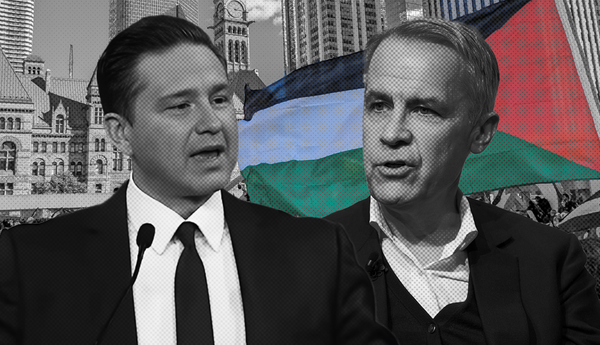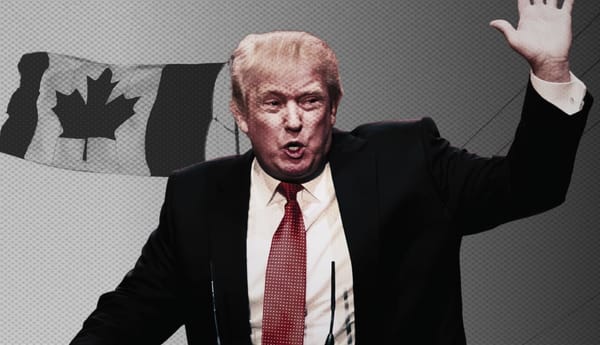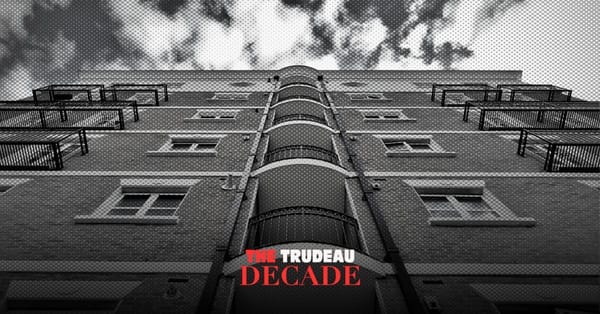On Jan. 25, 2020, Canada’s first case of COVID-19 was confirmed. In the following two years, all levels of government in the country implemented a range of policies intended to reduce the spread of, and resulting illness and death from, COVID-19.
At every step along the way, groups of people have opposed these policies, occasionally taking their protest to the streets. Their first manifestations were against masks and social distancing. As measures intended to blunt the worst of the pandemic came into place, protests evolved: anti-closures, anti-lockdowns, anti-vaccines, anti-vaccine mandates. These groups held rallies, rushed businesses and public transit stations without masks, blocked vaccine clinics, and employed many other methods that earned them attention and notoriety, but also support among some.
The claim of those opposing these government measures to be defending freedom for us all against a tyrannical state has been widely mocked in the media and online. They aren’t portrayed as defending freedom from some unjustified power, but rather as merely complaining about reasonable measures implemented by a democratic government. They are accused of being selfish, with little care for those they put at risk. They are charged with having no idea of what the public good is, and lacking any sense of community or consideration.
Some in this group are genuine cranks, believing, for example, that COVID-19 is a hoax or part of a “New World Order.” Most, however, just believe the measures ostensibly intended to curb the worst impacts of the pandemic will end up doing more harm than good. Their calculation of risk varies (some say masks are too far, others are OK with everything up to vaccine mandates — and I don’t conflate the two), and how they come to their conclusions is sometimes unclear, but ultimately it’s about weighing different real, perceived, and anticipated harms against each other.
And so, while these groups are mocked by Western politicians, they actually share a lot in common with them. The politicians also believe, without exception, that some level of COVID-19 spread, illness and death is acceptable if things can function relatively normally for the rest of society. The major difference between the protesters and politicians (in most cases at least) is where the point of acceptable death and illness for a return to the status quo may be.
Politicians, like the protesters, also demonize those that are willing to keep anti-COVID measures in place longer. For the protesters, this includes basically every level of the Canadian government. For the political leaders, this sometimes focuses on another government in Canada, but almost always includes China and its COVID-zero strategy. Like with other attacks on China in recent years — and those employed against the Soviet Union in the past — these operate on an anti-communist logic that contrasts freedom in Western democracies with totalitarianism in socialist states. But this framing is deeply flawed.
In a 1936 interview with an American reporter on the differences between the Soviet Union and the United States, Soviet Leader Joseph Stalin offered some insight on the issue that remains valuable, saying, “It is difficult for me to imagine what ‘personal liberty’ is enjoyed by an unemployed person, who goes about hungry, and cannot find employment. Real liberty can exist only where exploitation has been abolished, where there is no oppression of some by others, where there is no unemployment and poverty, where a man is not haunted by the fear of being tomorrow deprived of work, of home and of bread. Only in such a society is real, and not paper, personal and every other liberty possible.”
This is a useful framework when evaluating how Canada and China have done in their pandemic response. When it comes to real liberty in this pandemic — freedom from infection, illness and death, — China has performed better, and it’s not even close.
To start, it’s worth noting three things: the pandemic likely began in China, whereas Canada had weeks to prepare before the first case was confirmed; China has a population of about 1.4 billion; Canada has a population of about 38 million.
As of January 24, Canada had more than 2.92 million cases of COVID-19, compared to 105,600 in China. If you look at cases per 1 million people, the difference between Canada and China becomes more stark: 76,300 vs. 73, respectively. (Of course, this doesn’t take into account the fact that official daily case numbers in Canada may be, by some estimates, up to 10 times fewer than reality, due in large part to the testing system being overloaded and authorities no longer allowing most people to get tests at all.)
In terms of COVID-19 linked deaths, Canada has had more than 32,500, whereas China has had 4,636. When the death numbers for Canada and China are crunched per 1 million people, they are 852 vs. 3, respectively.
If you took Canada’s rates of cases and deaths and applied it to China, there’d be more than 106 million and 1.2 million, respectively, in the country, making it the deadliest location of the pandemic in terms of overall death count, with the most cases. If you flip the numbers around, applying China’s rate to Canada, cases and deaths in the country thoughout the pandemic would be about 2,774 and 114, respectively. That is more than 32,000 lives saved.
Moreover, the vast majority of China’s cases and deaths came within the first four or so months of the pandemic. This doesn’t make them acceptable, of course, but illustrates that once China got its system in action, it was largely successful.
Canada, meanwhile, suffered about the same number of deaths in 2020 and 2021, and exponentially more cases from December 2021 onward, indicating a failure to adopt measures that can successfully quell the virus, or even to learn from past waves and take preemptive measures in the relative downtimes.
A significant reason for this disparity is the aforementioned COVID-zero approach China has taken.
Unlike the anti-public health measure cohorts in Canada, including the country’s political leaders, China has decided that no amount of cases or deaths is acceptable. In order to achieve that goal, they’ve implemented measures many in Canada deem to be assaults on freedom. For example, on January 10, China locked down a city of 5.5 million people after two Omicron cases were reported. A week earlier, they locked down a city of 1.2 million people due to just three asymptomatic cases.
North American media has gone to absurd lengths to attack these measures. A January 12 New York Times article is perhaps the most disturbing example.
The writer, Li Yuan, describes China’s approach as using “iron-fist, authoritarian policies,” and claims that “Chinese intellectuals” (she doesn’t name any, instead just quoting a random social media user) are citing the situation as an example of the “banality of evil” concept.
Yuan writes, “[The phrase ‘banality of evil’ was] coined by the philosopher Hannah Arendt, who wrote that Adolf Eichmann, one of the chief architects of the Holocaust, was an ordinary man who was motivated by ‘an extraordinary diligence in looking out for his personal advancement.’ Chinese intellectuals are struck by how many officials and civilians — often driven by professional ambition or obedience — are willing to be the enablers of authoritarian policies.”
And so, you not only have the New York Times calling China’s COVID-zero policy evil, but also comparing it to one of the worst atrocities in human history. They are equating people volunteering to help implement policies intended to stop illness and death to those who worked toward the mass extermination of millions.
Yuan portrays China’s efforts as being inherently anti-human on a few occasions. She starts the article by writing (emphasis my own), “China’s ‘zero Covid’ policy has a dedicated following: the millions of people who work diligently toward that goal, no matter the human costs.” She later adds, “For the officials, virus control comes first. The people’s lives, well-being and dignity come much later.”
The article cites almost no data, mentions anecdotes that are hardly unique to China and limited in number, and uses broad descriptors such as “Chinese intellectuals” to smuggle the paper’s biases into the piece. Setting all of that aside though, and accepting Yuan’s reporting at face value, the quote from Stalin becomes relevant again.
China’s COVID-19 policies have resulted in an incredibly low rate of cases and deaths (the world average for cases and deaths is about 619 and 240 times more, respectively, than China’s.) This likely means millions of lives saved from death or serious illness. And yet, the writer, and countless more journalists, politicians, policy makers, and others she serves as a voice for, say that China’s approach has disregarded human costs.
What potential human cost has been suffered in China that is worse than losing millions of lives? What abstract liberty would make this number of cases and deaths acceptable? Yuan writes that virus control comes before “people’s lives, well-being and dignity,” but what action more considerate of a human life could be taken than saving it?
Circling back to Canada and the U.S., what sense of “well-being and dignity” is there in hundreds of thousands of people dying needlessly, alone, with tubes jammed down their throats, their lifeless bodies eventually carted into ice trucks? What “well-being and dignity” is there in elders, already forced to spend their last years in a strange place, being abandoned to the ravages of COVID-19 as their loved ones watch on helplessly?
And, of course, the idea that Canada is free while China is authoritarian, full-stop, is flawed in and of itself. Canadian governments not taking anywhere near enough measures to stop people from dying throughout the pandemic doesn’t mean it’s interested in freedom. Rather, it uses its power to intervene forcefully with decisions that benefit those that matter to the government: not the people, but business interests.
For example, is Canada allowing stores to remain open in order to give people the freedom to shop? Or is it forcing people to work in dangerous situations in order to help businesses make more profit? Have parts of Canada shortened the isolation period after testing positive for COVID-19 to five days instead of 10 because it doesn’t want to make people stay inside? Or have these governments done it because, as they’ve effectively admitted, corporations need workers back sooner, no matter the danger that poses?
If using the power of the state to enact policies that benefit a specific group is deemed authoritarian, then both China and Canada are guilty of the charge. The difference, of course, is that China’s decisions are largely made for the public good, while Canada’s are made for private capital.
The pandemic is perhaps the best metric we have to judge how well governments care for their people. It has impacted every country in the world (to varying degrees), and given us a chance to see how they’re capable of responding. It touches on everything: the health care system, infrastructure, manufacturing, social supports, sense of community, etc. And on all these measures, Canada has performed worse than China
Not many people in the West know how well China has done, partially because once this became apparent to journalists, they stopped writing about it. Yuan’s article, for example, certainly doesn’t mention that the U.S. has at least 2,950 and 887 times more cases and deaths, respectively, per million people than China. If you applied U.S. rates to China, there would be more than 301 million cases and 3.7 million deaths. If you applied China’s rates to the U.S., there would be 24,000 cases and 897 deaths. That is more than 890,000 lives saved.
When China’s handling of the pandemic does get discussed, it’s usually written off as impossible for Western states to achieve, or, as we’ve seen, undesirable because it hasn’t allowed people to stay “free.”
While Canada certainly can’t adopt a system identical to what China has, we absolutely should reconsider the merits of ours, and our standing in the world. The pandemic should remind us that capitalism has failed, and prompt us to take a different look at China, especially given the tense situation between its government and ours.
This is especially true because these sorts of differences won’t cease mattering when the pandemic ends. There certainly will be more global crises ahead: pandemics, climate destruction, drought, mass refugee migrations, etc.
The pandemic has further revealed what has already been apparent to some: the level of decisive action, coordination and infrastructure needed to tackle the lethal problems we face just isn’t possible with the capitalist governments in place in the West, who use the rhetoric of freedom to justify selfishness and greed at home and on the global stage.
There’s less difference between the cranks on the streets and our political leaders than you think. The time for demonizing the sorts of governments needed to give humanity a chance at survival is over.







